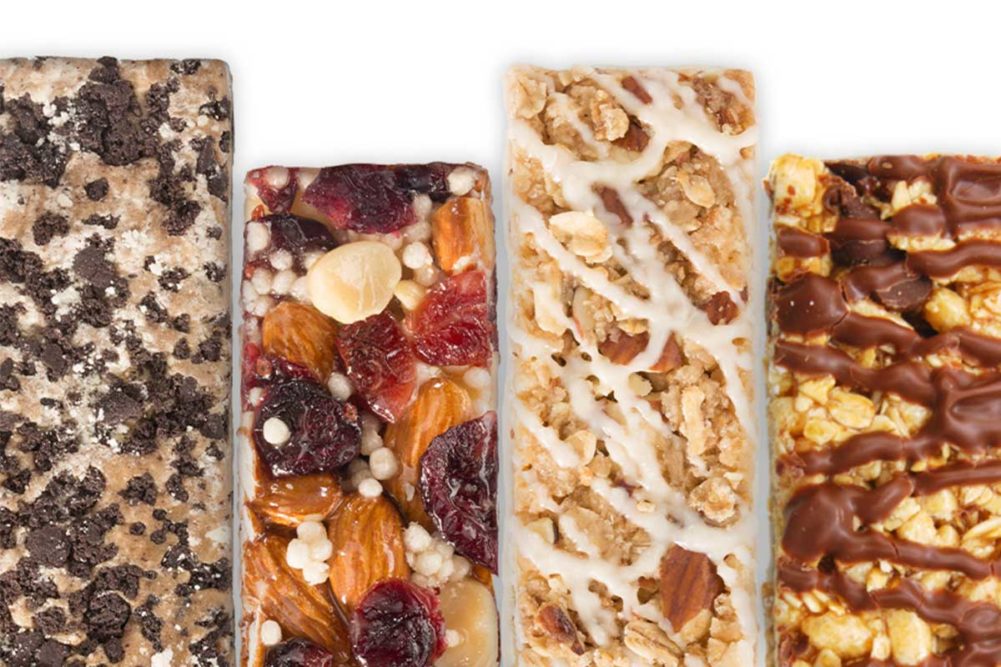Nutrition and snack bars bounced back last year and are poised to see strong growth in 2022, thanks in part to thriving consumer demand for products that provide functional health benefits.
“Since the pandemic, interest in this category has soared,” said Bart Child, chief commercial officer, Nellson, Anaheim. “The rise in concern over health and wellness has helped to expedite the emerging trend of products with functionally specific health benefits.”
According to Innova Market Insights, 94% of the cereal bars launched in the United States from January 2016 to July 2021 made a health claim.
“No added sugar” is the fastest growing claim within cereal and energy bar launches, with a compound annual growth rate (CAGR) of 28% over the past five years, Innova reported. A growing focus on healthier diets has increased consumer awareness of the negative effects of too much sugar.
“Desire for products with a reduced-sugar claim remained in the spotlight pre-, during and post-pandemic,” Mr. Child said. “These concerns are driving creative approaches to sugar reduction strategies.”
For example, some brands are simply reducing sugar content, or using natural sweeteners or sweetener alternatives to achieve sugar-free and no-sugar claims.
“Natural sweeteners not only help deliver on the desired low- to no-sugar claims but also provide a lower calorie count than sugar,” Mr. Child said.
When lowering sugar content, bar makers must be careful they aren’t sacrificing taste in the process or filling their bars with artificial ingredients to make up for it, said Ashley Nickelsen, founder of B.T.R. Bar, San Francisco.
“There are really two different types of bars that exist in the category: bars with natural ingredients but high sugar or low-sugar bars that are very processed,” Ms. Nickelsen said. “We’re trying to sit at the intersection between functionality and flavor.”
B.T.R. bar, a protein bar made with functional mushrooms, does this by using a cashew and almond butter base to give the bar a cookie-dough-like texture. The bars are free of natural flavors, stevia and emulsifiers and have 90% less sugar than the average protein bar.
“All our bars are lightly sweetened with monk fruit, and that’s how we’re really able to hit that blend consumers are looking for,” Ms. Nickelsen said.
Quest Nutrition is promoting low-sugar content in its bars as well. Quest’s protein bars contain only 1 gram of sugar and 4 grams of net carbs while offering 21 grams of protein.
“Our benefit of protein while being lower in net carbs and sugar makes us unique and promotes dietary health and wellness,” said Linda Zink, chief marketing officer, Quest. “Consumers don’t have to trade in taste and cravings for better-for-you foods; they have all of the benefits together.”
Protein and fiber are the main functional ingredients in cereal and energy bar launches, according to Innova Market data. Other popular ingredients include prebiotics and probiotics, flaxseed, calcium and antioxidants, as well as allergen-free and allergen-friendly bars.
One example is Blake’s Seed Based, Chicago, a bar made with seeds as the primary ingredient that’s free of the top eight food allergens, including peanuts, tree nuts, wheat, soy, eggs, dairy, fish and shellfish.
“I have a nut allergy, and I was frustrated with all the bars in the market that had nuts in them,” said Blake Sorenson, the company’s founder. “I solved my own problem and realized a lot of other people had the same dietary restrictions as well.”
The bars come in Raspberry, S’mores and Blueberry Lemon and have less than 10 grams of sugar per bar.
Blake’s Seed Based is the only seed bar in most categories and retailers, Mr. Sorenson said, so the bar’s emphasis is on the health benefits a seed-based bar can provide.
“Right now, you’re seeing the explosion of functional benefits,” Mr. Sorensen said. “There are a lot of benefits with seeds as far as the protein amount and antioxidants. Being allergen-friendly is a huge component to a lot of people. Even if they don’t have a food allergy, they may be trying to remove ingredients like gluten or milk. We’re gaining a lot of trial and traction there.”
This article is an excerpt from the February 2022 issue of Baking & Snack. To read the entire feature on Snack Bars, click here.





